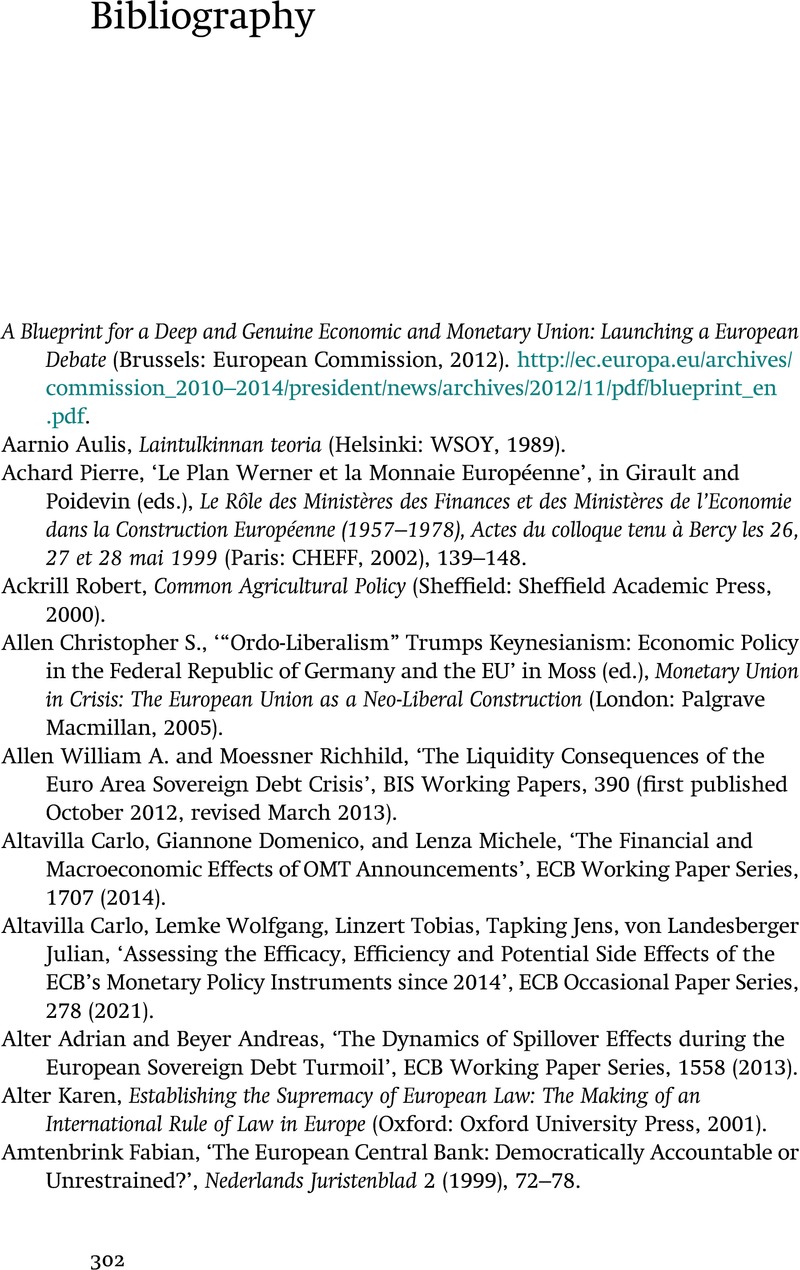 The European Central Bank and the European Macroeconomic Constitution
The European Central Bank and the European Macroeconomic Constitution Book contents
- The European Central Bank and the European Macroeconomic Constitution
- Cambridge Studies in European Law and Policy
- The European Central Bank and the European Macroeconomic Constitution
- Copyright page
- Contents
- Figures
- Series Editors’ Preface
- Preface and Acknowledgements
- Abbreviations
- 1 Introduction: A Supranational Central Bank as a Subject
- Part I The ECB as the Central Bank of the European Macroeconomic Constitution
- Part II Crises, ECB Measures and the Macroeconomic Constitution
- Part III The ECB from a Central Bank of Stability to a Central Bank of Crisis
- Bibliography
- Index
- References
Bibliography
Published online by Cambridge University Press: 15 September 2022
- The European Central Bank and the European Macroeconomic Constitution
- Cambridge Studies in European Law and Policy
- The European Central Bank and the European Macroeconomic Constitution
- Copyright page
- Contents
- Figures
- Series Editors’ Preface
- Preface and Acknowledgements
- Abbreviations
- 1 Introduction: A Supranational Central Bank as a Subject
- Part I The ECB as the Central Bank of the European Macroeconomic Constitution
- Part II Crises, ECB Measures and the Macroeconomic Constitution
- Part III The ECB from a Central Bank of Stability to a Central Bank of Crisis
- Bibliography
- Index
- References
Summary

- Type
- Chapter
- Information
- The European Central Bank and the European Macroeconomic ConstitutionFrom Ensuring Stability to Fighting Crises, pp. 302 - 328Publisher: Cambridge University PressPrint publication year: 2022


